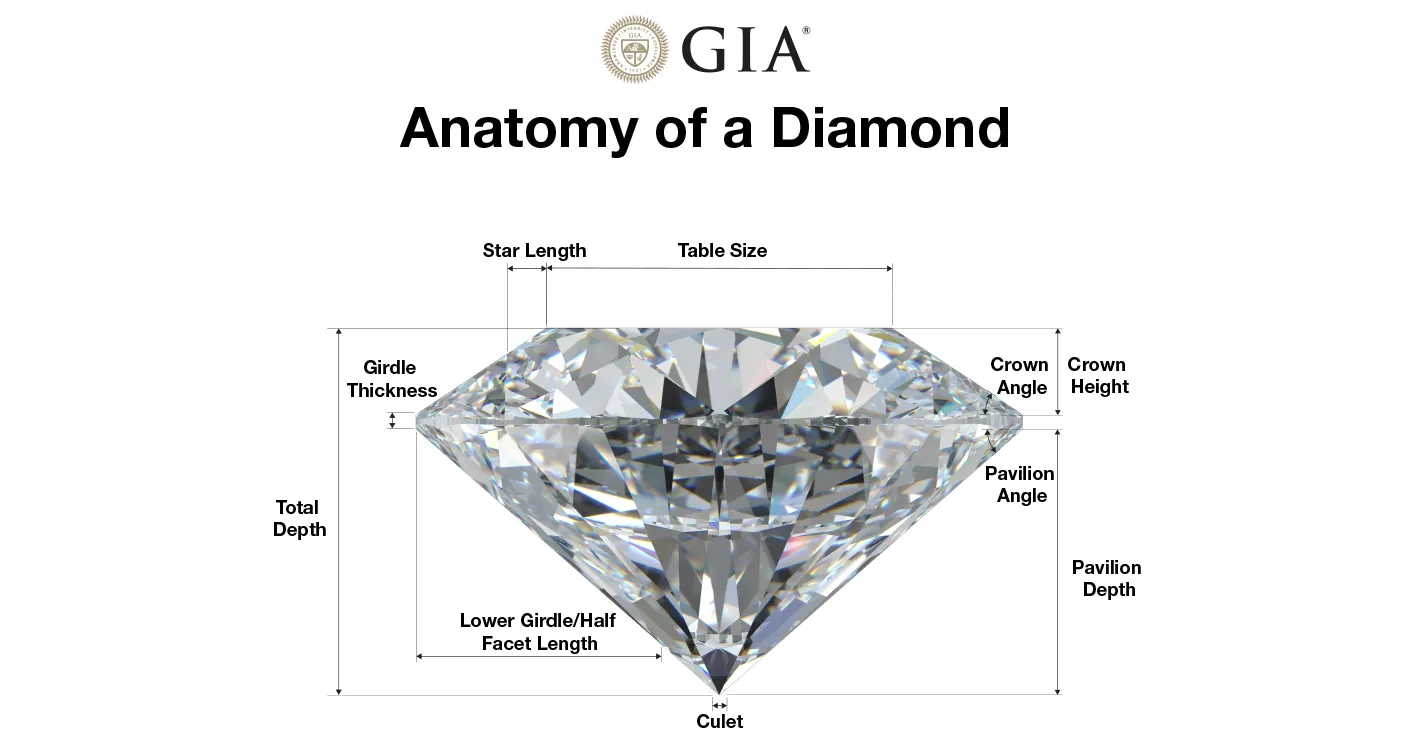The 4Cs of Diamonds

Your Essential Guide to Diamond Quality
When buying a diamond—whether for an engagement ring, anniversary gift, or investment—it’s important to understand the 4Cs: Cut, Color, Clarity, and Carat Weight. These four characteristics, developed by the Gemological Institute of America (GIA), are used worldwide to evaluate and compare diamonds.
At Makriadis Jewelry, we believe that informed choices lead to meaningful purchases. This guide will help you understand each of the 4Cs in depth so you can confidently select the diamond that suits your style, values, and budget.
Cut

The Key to Sparkle and Fire
A diamond’s cut is the most critical factor affecting its overall appearance and brilliance. It refers not to the shape (such as round, oval, or emerald) but to how well the stone’s facets interact with light. A precisely cut diamond will reflect light from one facet to another, maximizing its brightness, fire (colored light dispersion), and scintillation (sparkle).
Cut Grades (GIA Standard):
- Excellent (EX): Maximum sparkle and light return
- Very Good (VG): High brilliance, nearly indistinguishable from Excellent
- Good (G): Adequate brilliance, but less fire
- Fair (F): Noticeably less sparkle
- Poor (P): Dull, with minimal brilliance
Color

From Colorless to Warm Hues—Every Shade Tells a Story
Color in diamonds actually refers to the absence of color. The GIA scale ranges from D (colorless) to Z (light yellow or brown). Truly colorless diamonds are extremely rare and valuable, while near-colorless stones may appear just as brilliant when mounted in jewelry.
Color Grades:
- D–F: Colorless– Highest purity and brightness
- G–J: Near Colorless– Virtually no visible color
- K–M: Faint Color– Slight warmth visible
- N–Z: Noticeable Color– Often used in antique-style pieces

Gemologist tip: Choose G-J when selecting rose or yellow gold jewelry.
Clarity

Flawless to Slightly Included—Understanding a Diamond’s Purity
Clarity assesses the presence of inclusions (internal)and blemishes (external)in a diamond. Most imperfections are microscopic and don’t affect a stone’s beauty—but they can impact price. Diamonds formed naturally over millions of years often contain internal “fingerprints” that make each stone unique.
Clarity Grades:
- FL (Flawless): No inclusions under 10× magnification
- IF (Internally Flawless): No internal flaws
- VVS1–VVS2: Very, Very Slight Inclusions, extremely hard to detect
- VS1–VS2: Very Slight Inclusions, not visible to the naked eye
- SI1–SI2: Slight Inclusions, some visible under magnification
- I1–I3: Included, flaws are easily visible

Carat Weight

Two diamonds of equal carat weight may look different in size depending on how they’re cut. A deep diamond may appear smaller from the top than a shallower stone of the same weight.
- Consider slightly below “benchmark” weights (e.g. 0.90ct instead of 1.00ct) for better pricing
- Match carat weight to finger size and ring design for best aesthetics
How the 4Cs Work Together
No single “C” determines a diamond’s value or beauty—it’s the combination that creates a truly special stone. A well-cut diamond with excellent clarity and ideal color can shine brighter than a larger diamond with inferior cut or visible inclusions.
Bonus: Diamond Shapes
Choosing the Silhouette That Speaks to You
While the 4Csdetermine a diamond’s quality, the shapedefines its style and personality. Shape refers to the outline or formof the diamond when viewed from above. Each shape has its own visual appeal and interacts with light differently, influencing sparkle, elegance, and design flexibility.
Popular Diamond Shapes:
- Round Brilliant– The most classic and sparkly; ideal for timeless engagement rings.
- Oval– Elegant and elongating; gives the illusion of a larger size.
- Emerald– Rectangular with step-cut facets; known for clarity and a refined, vintage feel.
- Cushion– Square with rounded corners; soft and romantic.
- Princess– Sharp square shape; modern and edgy with brilliant sparkle.
- Pear– Teardrop silhouette; unique and flattering on the hand.
- Marquise– Football-shaped; maximizes carat appearance.
- Radiant– Combines brilliance and shape flexibility; a hybrid of round and emerald.
- Asscher– Square step cut with a deep, geometric look.
- Heart– The symbol of love; romantic and bold.
At Makriadis Jewelry, we’re here to help you understand how each characteristic affects beauty, performance, and price—and to guide you toward the perfect balance for your priorities.